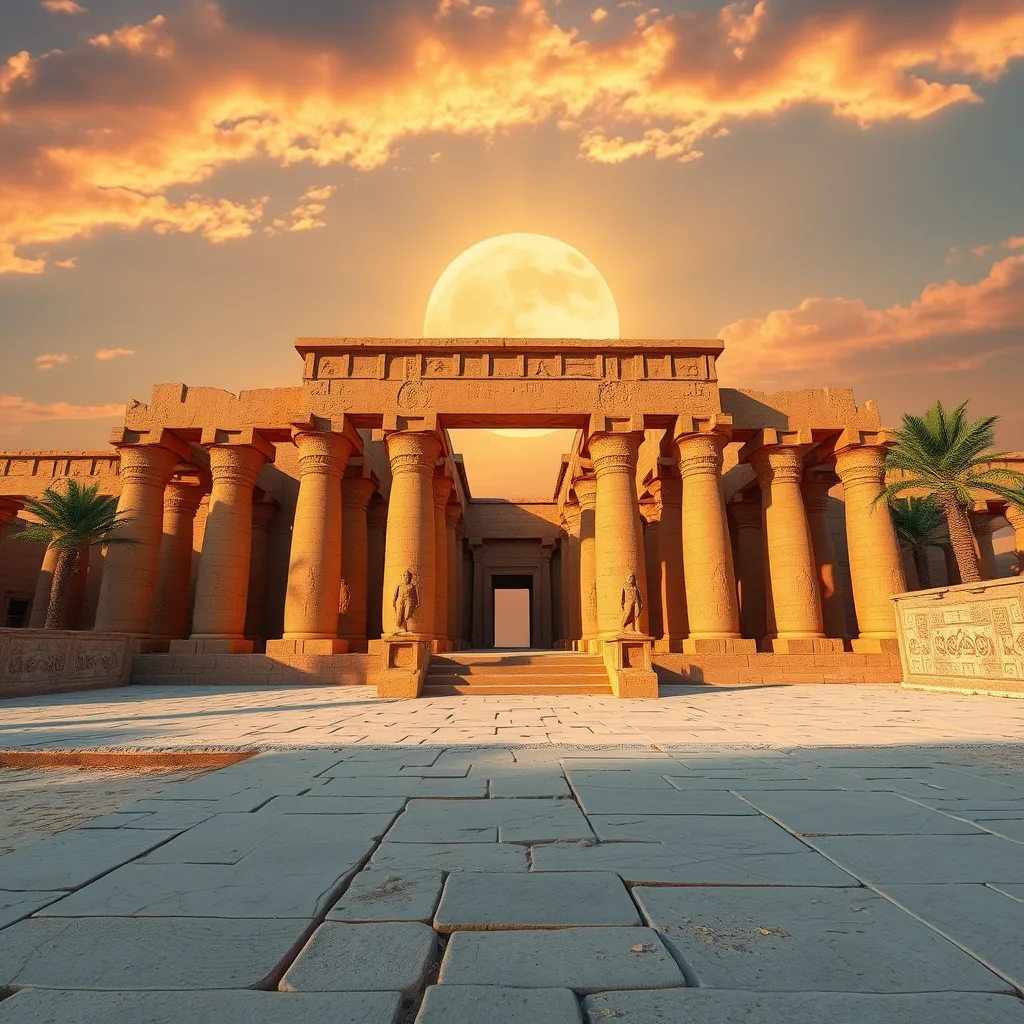The Temple of the Sun: Exploring the Karnak Complex
I. Introduction
The Karnak Complex, located in Luxor, Egypt, is one of the most significant religious sites of ancient Egypt. This vast temple complex is dedicated primarily to the Theban triad of Amun, Mut, and Khonsu, with the Temple of the Sun, or the Temple of Aton, being one of its most remarkable features. The Temple of the Sun holds a unique place in ancient Egyptian religion, representing both the solar deity and the pharaoh’s divine connection.
This article aims to explore the historical significance, architectural features, religious importance, artistic expressions, archaeological findings, and visitor information regarding the Temple of the Sun within the Karnak Complex.
II. Historical Context
A. Origins of the Karnak Complex
The origins of the Karnak Complex can be traced back to the Middle Kingdom of Egypt around 2055 BC, with the majority of the construction occurring during the New Kingdom (1550-1070 BC). Initially, it served as a religious center for the worship of Amun, the king of the gods.
B. Timeline of construction and development
- Middle Kingdom (2055-1650 BC): Initial construction phase begins.
- New Kingdom (1550-1070 BC): Major expansions and additions by pharaohs.
- Post-New Kingdom (1070-332 BC): Continued use and some modifications.
C. Key pharaohs and their contributions
Several pharaohs played crucial roles in the development of the Karnak Complex, including:
- Hatshepsut: Expanded the temple and promoted the worship of Amun.
- Thutmose III: Added numerous structures, making significant contributions to the temple’s layout.
- Ramses II: Constructed the Great Hypostyle Hall and other monumental structures.
III. Architectural Features
A. Design and layout of the Temple of the Sun
The Temple of the Sun is characterized by its grand design and intricate layout, showcasing the architectural brilliance of ancient Egyptians. It comprises various courtyards, halls, and sanctuaries, all oriented towards the east to capture the first rays of the sun.
B. Unique architectural elements
- Pylons: Massive gateway structures that mark the entrances to the temple.
- Hypostyle halls: Large halls filled with towering columns, creating a forest-like effect.
- Obelisks: Tall, four-sided monuments that symbolize the sun’s rays.
C. Symbolism in the structure
The Temple of the Sun is rich in symbolism, primarily representing rebirth and renewal. The alignment of the temple with the sunrise during solstices showcases the ancient Egyptians’ deep connection with solar cycles and their beliefs in the afterlife.
IV. Religious Significance
A. Role of the Temple in ancient Egyptian worship
The Temple of the Sun served as a primary site for worship and rituals dedicated to the sun god Aton. It played a vital role in the religious life of ancient Egyptians, where pharaohs performed ceremonies to ensure the favor of the gods.
B. Deities associated with the Temple of the Sun
While the temple is dedicated to Aton, other deities such as:
- Amun
- Ra
- Osiris
were also honored within the complex.
C. Rituals and ceremonies conducted within the complex
Various ceremonies, including solar festivals and daily rituals, were performed to celebrate the rising sun and honor the gods. The most significant of these was the Opet Festival, where the statue of Amun was transported from Karnak to Luxor Temple.
V. The Art and Inscriptions
A. Overview of the artwork and carvings
The Temple of the Sun is adorned with intricate carvings and artwork, depicting scenes of gods, pharaohs, and various mythological events. These artworks serve as a testament to the artistic achievements of ancient Egyptian civilization.
B. Interpretation of hieroglyphs and imagery
The hieroglyphs found throughout the temple provide insight into the beliefs, rituals, and daily life of ancient Egyptians. They often tell stories of divine interactions and the pharaoh’s role as the intermediary between gods and people.
C. Importance of art in understanding ancient beliefs
The art and inscriptions in the Temple of the Sun are crucial for understanding ancient Egyptian culture, as they reveal the values, beliefs, and social structure of the time.
VI. Archaeological Discoveries
A. Recent excavations and findings
Recent archaeological efforts have uncovered new sections of the Temple of the Sun and additional artifacts that shed light on its historical significance. Discoveries include:
- New chambers and altars
- Statues and inscriptions
- Tools and everyday objects used in rituals
B. Contributions to Egyptology
The findings at the Temple of the Sun continue to enhance our understanding of ancient Egyptian civilization, contributing valuable information to the field of Egyptology.
C. Preservation efforts and challenges
Preserving the Temple of the Sun poses various challenges, including environmental factors, tourism impact, and the need for ongoing research. Efforts are being made to conserve its structures and artworks for future generations.
VII. Visiting the Temple of the Sun
A. Practical information for tourists
Visitors to the Temple of the Sun can access the site through the Karnak Complex. It is recommended to hire a guide for a more enriching experience.
B. Best times to visit and what to expect
The best times to visit are during the cooler months (October to April). Expect to see stunning architecture, intricate carvings, and a wealth of history.
C. Nearby attractions within the Karnak Complex
- The Great Hypostyle Hall
- The Sacred Lake
- The Temple of Amun
VIII. Conclusion
The Temple of the Sun stands as a monumental testament to the architectural and cultural achievements of ancient Egypt. Its significance extends beyond its physical structure, embodying the spiritual and religious life of the civilization. As we reflect on its cultural heritage, the Temple of the Sun invites further exploration into the rich tapestry of ancient Egyptian history and mythology.




